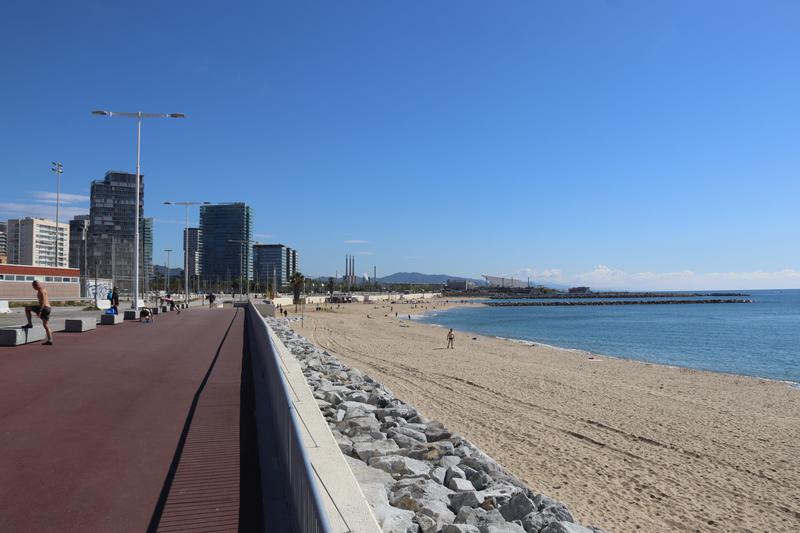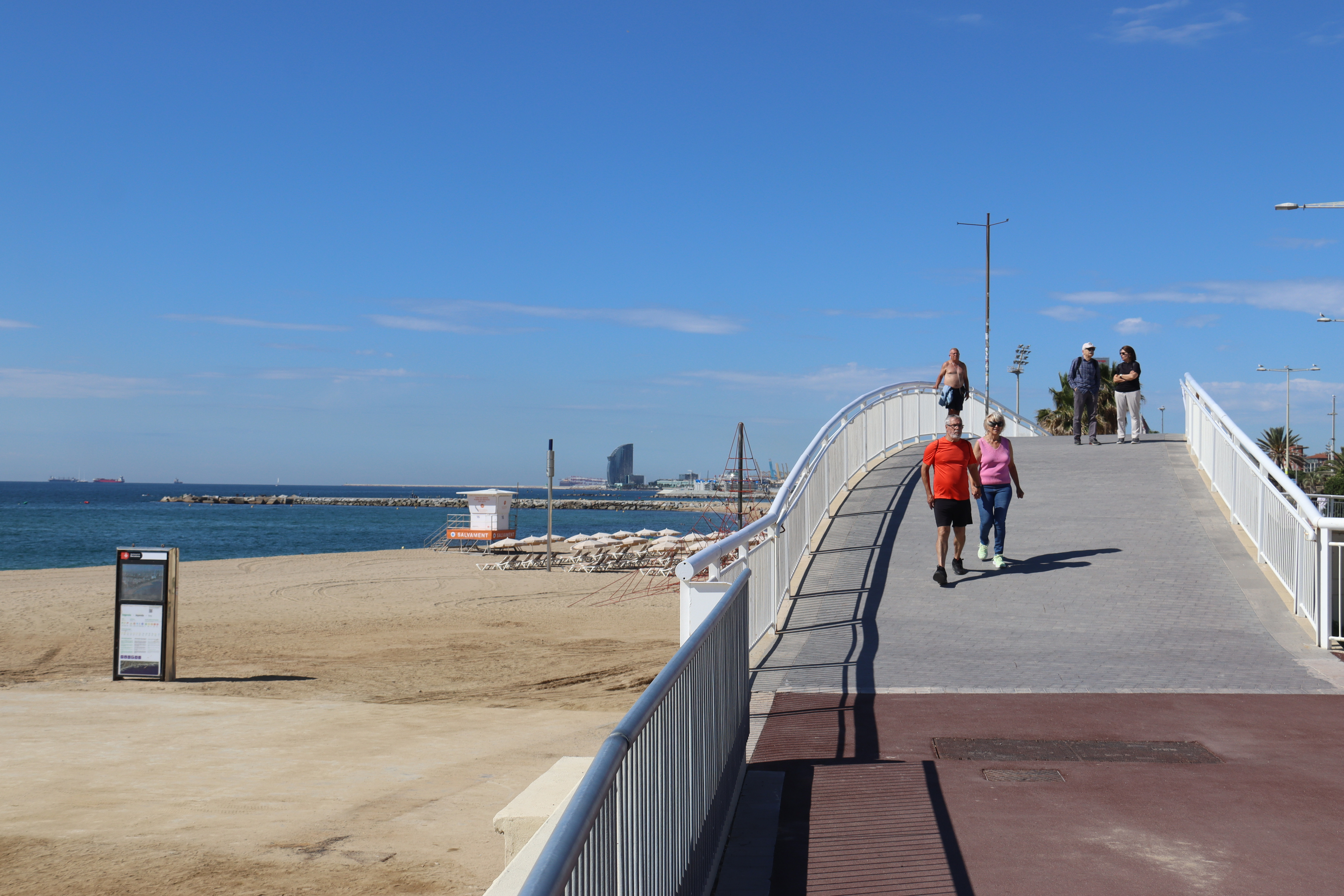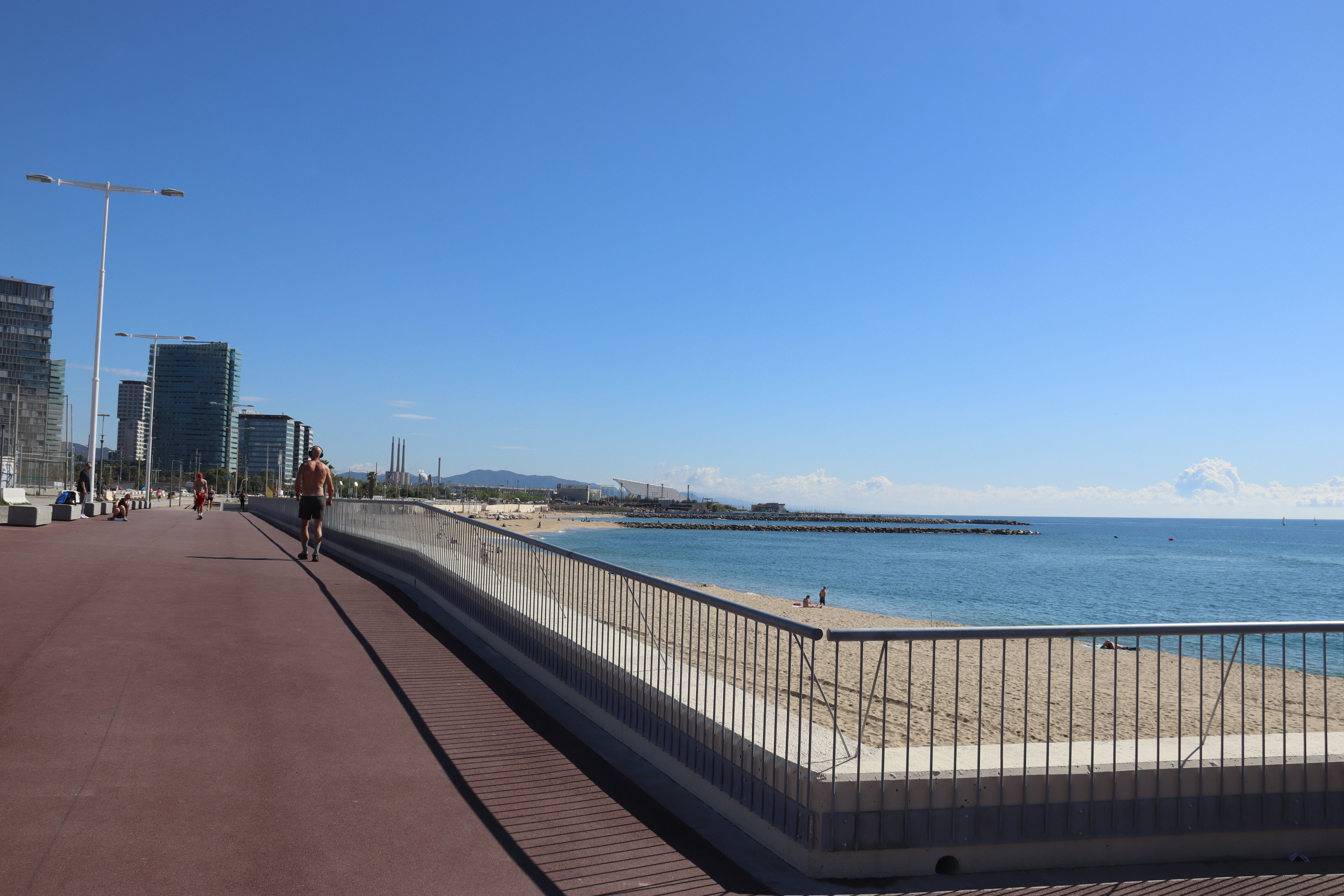Barcelona's Nova Mar Bella beach reopens after November storm
Beaches in Catalan capital lose 30,000 m3 of sand every year

Barcelona's Nova Mar Bella beach has reopened following the completion of works to repair the damage caused by November storms Ciaran and Domingos.
The works, which cost €1.7 million, included the reconstruction of the promenade wall, the construction of a breakwater, the rebuilding of the paving and the facilities that serve the beaches, such as water and electricity, and the installation of a new railing.
The beach has been filled with 23,000 cubic meters of sand brought from Masnou, in the Maresme region in northern Barcelona.

As for the provision of sand, this is a partial measure, as explained by the director of Barcelona's beaches, Patrícia Giménez. She said there is an urgent need for the Spanish government to take a major step, as it did in 2010 when up to 750,000 m3 of sand was added to six beaches in the city.
As Giménz explained, the study of the needs and the sand contributions that could be made has already begun, but she hopes that the sand will arrive before a storm like that of November.
Lose of sand
Barcelona's beaches lose around 30,000 cubic meters of sand every year. To alleviate this situation, strategic movements of sand are carried out every year: from places where it accumulates to where it is lacking.

One of the places where sand usually accumulates is the mouth of Port Olímpic, from where this year 17,000 cubic meters of sand will be taken and transferred to the beaches of Barceloneta, Sant Sebastià, El Somorrostro, and a small part of New Icaria.
On the other hand, the critical points of the beaches of Barcelona are Nova Mar Bella, the dune of Mar Bella, and an area on the Llevant beach.
Catalonia's problem
Nearly two out of every three Catalan beaches have lost sand and surface area in the last seven decades.
According to preliminary data from a study by the Cartographic and Geological Institute of Catalonia (ICGC) to which the Catalan News Agency (ACN) has had access, 65% of the beaches have suffered regression between 1956 and 2019. In total, 319 of the 489 beaches for which we have data have lost surface area.
The regions with the most beaches affected by the retreat have been Baix and Alt Empordà, with 70%, while most of those in the metropolitan area of Barcelona have extended their stretch of coastline.
The ICGC study also includes a comparison between 2010 and 2019. In this period, of the 553 beaches studied with available results, 273 have suffered regression (49.4%) and 280 have grown, 50.6%.
The figures therefore show more balance in comparison with the seven-decade figures, but the trend of which regions are seeing their coastlines recede is similar to the full data gathered since 1956.